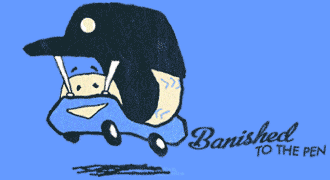Gone are the years where the Nationals were the laughingstock of the Major Leagues. Where the rats crossed home plate in RFK Stadium more than the Washington players on the basepaths. Where their Segway-riding GM signed 16-year-old 20-year-old Smiley Gonzalez Carlos Lugo to a $1.4M signing bonus. Where team president Stan Kasten encouraged Philles’ fans to fill up Nationals Park and they did. Where manager Jim Riggleman called it quits in the middle of the season and went to Caddie’s. Where the Nationals truly were the Natinals.
But not anymore.
The Nationals have topped the National League East three of the last five seasons, including 2016, and are the favorites to repeat in 2017.
Catchers
With the late addition of Matt Wieters, the Nationals are primed to be trendsetters in a new wave of defensive positioning. Washington and its overabundance of Major League-caliber catchers appear to be planning the unprecedented move of starting two catchers at the same time. That’s the only explanation I can come up with after the club re-signed Jose Lobaton, traded for Derek Norris earlier in the off-season, and inked Wieters all while keeping top catching prospect Pedro Severino cooling his heels at Triple-A Syracuse.

A candid photograph of the the Washington Nationals’ catchers suiting up in the clubhouse before a spring training game
Wieters is clearly an upgrade and is costing the team just $10.5 million for this season (with a player option for 2018), but it’s the fallout from the signing that has yet to hit. The player most likely to be dealt is one-time Nationals’ prospect Norris who returned to the fold in a December trade with the Padres (ed. note: Norris was originally drafted by the Nationals, who traded him to the A’s for Gio Gonzalez in 2011). The former All-Star is looking for a bounce back season and despite the best numbers historically against left-handed pitchers among this group of catchers, every day we get closer to April 3rd is a day Norris presumably finds himself in yet another uniform.

Lobaton is the incumbent backup and he fits the prototype as a very good pitch framer and handling the staff well in limited duty. Not to mention he also makes the best paper cup goggles since Marty Bystrom made working pairs for the entire 1981 Phillies’ pitching staff. Wieters and Lobaton are both switch-hitters so there is some flexibility between them, but both are significantly better batters from the left side of the plate.
Infield
The big story here is Trea Turner’s move back to his natural shortstop from center field displacing noted red-ass Danny Espinosa, who in turn sulked his way to the Los Angeles Angels of Anaheim.
Turner was the spark-plug the Nationals needed at the top of the lineup for the second-half of the season. The National League Rookie of the Year runner-up hit .342, scored 53 runs, and pounded out 35 extra-base hits including a surprising 13 homers in only 73 games. Turner’s best tool, however, is his speed as he swiped 33 bases and is at least in the top five fastest players in the majors.

Any way you cut it, Turner for Espinosa will be a huge offensive upgrade. After all, with his 174 strikeouts in 2016 Espinosa generated the same amount of wind energy as entire turbine farms off coastal towns. As much as Espi was a black hole in the lineup, one can’t argue with his defensive prowess and how his absence may now even worsen Daniel Murphy’s less than stellar UZR and effectiveness at second base.
Speaking of Murphy – – at what point is this kind of offensive production the new normal for the 31-year-old infielder? Something most definitely clicked for Murphy around August 2015. Since then he has slugged .578 and that does not even include his Ruthian run through the 2015 postseason. Murphy appears to be living proof of the theories of optimal launch angles and exit velocity as he has embraced both in reworking his swing with hitting coaches Kevin Long with the Mets and now Rick Schu and Jacque Jones with the Nats.
Continuing around the horn, injuries have slowed and sidelined Ryan Zimmerman for parts of the last three seasons. Can the once face of the franchise stay healthy and return to form? Rizzo, the Lerners, and Nationals’ fans hope so; otherwise, the $32 million due to the aging first baseman through 2019 (plus a $2M buyout on a team option for 2020) could become a significant albatross in future roster construction.
If Zimmerman’s plantar fasciitis and other ailments limit his playing time, expect newcomer Adam Lind to pick up the majority of the at-bats. Up until two weeks ago, Lind was best known as a slugger who topped 20 home runs six separate times in his 11-year career mostly with Toronto. Now he’s just the subject of the baseball equivalent to the Zapruder film.

After a disappointing, injury-shortened season the year before, Anthony Rendon responded with a 2016 offensive campaign that was just a tick off from his 2014 numbers when he finished fifth in NL MVP voting. The Nationals need Rendon to remain on the field as he represents their best right-handed hitting run producer in the middle of the potent lineup.
Outfield
In a lot of ways the trade for Adam Eaton was a typical Mike Rizzo move. Eaton comes with years of team control (through 2021 if they pick up two options) and at a fiscally friendly rate. But giving up Lucas Giolito, Reynaldo Lopez, and Dane Dunning is as close as Rizzo is getting to going all-in on 2017 while holding only pocket jacks.
Eaton has been remarkably consistent with the bat during his last two seasons with the White Sox posting nearly identical slash lines of .287/.361/.431 and .284/.362/.428 back to back. I was honestly surprised to learn that last year Eaton posted the fourth best WAR (6.0) among all Major League outfielders. A huge component of that though was his defense in mostly right field, but unfortunately Washington needs Eaton to play center until uber-prospect Victor Robles is ready some time in 2018.
Right field for Washington is obviously occupied by 2015 National League MVP, Bryce Harper. With a long-term deal looming on the horizon, one has to question if Harper’s diminished output was because he was hurt last season or not. His defensive positioning, the metrics, and his bottom-line numbers clearly suggest he was not at 100 percent for part of the season, but neither him nor his agent Scott Boras are admitting to it. Considering he didn’t go under the knife in the off-season, they appear to betting on four months of rest and rehabilitation will be enough to fix whatever ailed him. And when you see him deadlift 505 pounds, you tend to buy what they’re selling.
Jayson Werth enters the 2017 campaign in the final year of what was then a massive seven-year deal for $126M. Short of an injury-plagued 2015 season, Werth has surprisingly justified the length and price tag of his contract by remaining productive and lighting the way for other big name free agents to sign with the Nationals. At this stage, they don’t need Werth to carry the team anymore. They just need his 38-year old body to remain in relatively one piece otherwise the Nationals are relying on Chris Heisey, Michael Taylor, or Brian Goodwin to become everyday players.
Starting Rotation
If healthy, the Nationals have one of the top rotations in the league, but therein lies the rub: the Nationals’ are incredibly thin after the starting five. But before we get to the question marks, let’s look at the team’s two workhorses, Max Scherzer and Tanner Roark, who both finished in the top ten for innings pitched last season.
After his rookie season, Scherzer made 30+ starts eight seasons in a row averaging 205 innings per year. The 32-year old has thrown the most innings of his career the last two seasons in D.C. tallying 228.2 and 228.1. But a broken knuckle on his ring finger has Scherzer falling behind schedule this spring and modifying his fastball grip to throw pain free.
Roark has been a revelation in the rotation, going 31-20 the last two seasons the Nationals have used him exclusively as a starter. That’s a long way from the pitcher who was inconsistent at best and had WHIPs above 1.40 at both Double-A in 2011 and Triple-A in 2012.
Gio Gonzalez isn’t an injury risk, but the lone southpaw has been on a sharp decline the last four years since his first season in Washington when he earned a third-place Cy Young finish. Watching Gio work every fifth day is maddeningly frustrating as he seemingly reaches 100 pitches in the fourth inning of every start. That may be an exaggeration, but it sure feels that way even if it isn’t.
Here’s where we might want to break out the bubble wrap.
For all of his talent, Stephen Strasburg has missed around ten starts each of the last two seasons logging under 150 innings in both campaigns while Joe Ross has yet to carry a full workload for a back-end starter. What makes this all the more troubling is the pu-pu platter the Nationals have to pick from for their sixth starter: A.J. Cole, Jacob Turner, Austin Voth, Jeremy Guthrie, and Vance Worley.
Bullpen
After striking out on the free agent closer trinity of Mark Melancon, Kenley Jansen, and Aroldis Chapman, the Nationals appear intent on beginning the season with an internal option as the team’s closer.

The Nationals’ 2017 closer
Sean Kelley is likely the de facto choice as he cleaned up scraps last season for Dusty Baker to accrue seven saves. But even his skipper sounds leery in putting the pressure, both emotional and physical, on the guy who has already gone through two Tommy John surgeries.
Blake Treinen keeps getting mentioned as a possibility because of his hard, heavy sinker that he throws in the upper 90s, but I’m not sure you want your closer walking 4.2 per 9 or allowing 25% of inherited runners to score. I’m not saying the Nats should deport him, but F.P. Santangelo can dial back his effusive praise from time to time.
The archetypal candidate in the mix is Koda Glover who brings the stuff (a four-seamer that approaches triple digits and a slider in the low 90s) and the attitude. Glover, who rose quickly through the ranks after being drafted in the 8th round of the 2015 draft, may be the future for the Nationals but I find it tough to believe traditionalist Baker and Rizzo trust him to close on the biggest stage in the postseason.
The Nationals might also break camp carrying three left-handed options out of the pen: Sammy Solis, Oliver Perez, and Enny Romero. Solis struggles to stay healthy, Perez should never face a right-handed batter, and Romero looks to be Rizzo’s 2.0 version of Henry Rodriguez.
Rounding out the bullpen choices at the bottom of the barrel are Worley, Austin Adams, Jimmy Cordero, Trevor Gott, Matt Albers, and the shell of what used to be Joe Nathan.
Outlook
The Nationals’ are walking a tightrope with a lack of depth in the outfield and in the starting rotation, but that still puts them ahead of everyone else in the National League except for the Chicago Cubs and Los Angeles Dodgers. The NL East will be tougher this year as Atlanta and Philly continue their rebuilds, the Marlins look to contend, and the Mets should have their rotation healthy. If the Nationals are content to make the playoffs, this will be a rewarding season. Otherwise, their window of opportunity will have to crack open yet again in 2018.
Prediction: 88-74
Next post: 2017 Season Preview Series: Atlanta Rebuilds a Braves New WorldPrevious post: 2017 Season Preview Series: Minnesota Twins




Leave a Reply